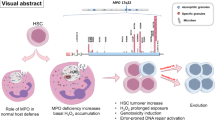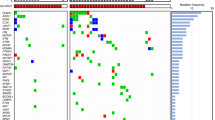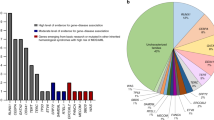Abstract
Glutathione S transferase theta 1 (GSTT1) is implicated in the detoxification of different substances, including carcinogens. Recently, an increased incidence of GSTT1 null genotype was found in myelodysplastic syndromes (MDS) by comparison with a control population. We analyzed GSTT1 gene by PCR in 174 MDS cases and 100 controls. The incidence of GSTT1 null genotype was 22% in MDS in 19% in controls (P = 0.53). The incidence of GSTT1 null genotype in MDS did not differ according to gender, FAB classification, karyotype and whether MDS were therapy related or ‘de novo’. In 86 of the de novo cases, data on previous occupational and environmental exposure to a list of 170 substances were available. In those MDS patients, a significantly lower frequency of GSTT1 null genotype was seen in cases with previous jobs exposed to chemicals, and with previous exposure to mineral dusts and exhaust gases. A lower frequency (but with only borderline significance) was seen in MDS patients who had been coal miners and those who had been exposed to any of the 70 substances analyzed. Overall, GSTT1 null genotype occurred at a similar incidence (19%) in controls and in MDS cases previously exposed to any substance, but tended to be higher in unexposed MDS patients (40%, P = 0.07). Our results do not confirm the higher incidence of GSTT1 null genotype observed in MDS. The lower incidence of GSTT1 null genotype in MDS cases exposed to some compounds previously found associated with MDS is apparently unexpected. However, it could be explained by the fact that GSTT1 enzyme, which has a detoxification role for some compounds, could also have an activating role for other substances, including solvents.
This is a preview of subscription content, access via your institution
Access options
Subscribe to this journal
Receive 12 print issues and online access
$259.00 per year
only $21.58 per issue
Buy this article
- Purchase on Springer Link
- Instant access to full article PDF
Prices may be subject to local taxes which are calculated during checkout
Similar content being viewed by others
Author information
Authors and Affiliations
Rights and permissions
About this article
Cite this article
Preudhomme, C., Nisse, C., Hebbar, M. et al. Glutathione S transferase theta 1 gene defects in myelodysplastic syndromes and their correlation with karyotype and exposure to potential carcinogens. Leukemia 11, 1580–1582 (1997). https://doi.org/10.1038/sj.leu.2400767
Received:
Accepted:
Issue Date:
DOI: https://doi.org/10.1038/sj.leu.2400767
Keywords
This article is cited by
-
Association between glutathione S-transferase T1 null genotype and risk of myelodysplastic syndromes: a comprehensive meta-analysis
Tumor Biology (2013)
-
Low frequency of the glutathione-S-transferase T1-null genotype in patients with primary myelodysplastic syndrome and 5q deletion
Leukemia (2008)
-
Prognostic significance of the null genotype of glutathione S-transferase-T1 in patients with acute myeloid leukemia: increased early death after chemotherapy
Leukemia (2002)
-
Chromosome and Molecular Abnormalities in Myelodysplastic Syndromes
International Journal of Hematology (2001)



